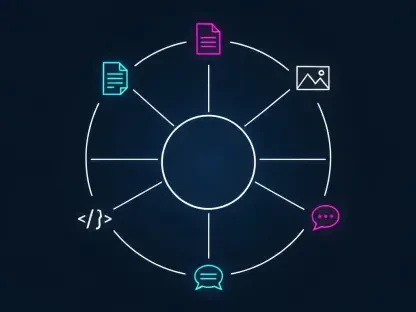In today’s digital era, seamless document access across devices is essential for efficient collaboration. Microsoft has introduced anonymous file-sharing capabilities for Android users, enabling them to open shared Microsoft Office files without needing to sign in. This advancement responds to previous challenges, as Android users were required to log into their Microsoft accounts to view Office documents—a hurdle that had already been addressed for iOS users. This review delves into how this feature aligns with Microsoft’s strategy of enhancing user experience and cross-platform consistency.
Exploring Anonymous File Sharing on Android
The emergence of anonymous file sharing on Android marks a pivotal shift in digital collaboration. At its core, this feature allows Android users to access Microsoft Office documents shared by others without the necessity of logging in. This functionality responds directly to the user demand for greater accessibility and simplicity when handling files. Its introduction is part of a larger trend in digital collaboration, promoting ease of use and inclusivity across diverse platforms. By eliminating the login requirement for viewing, Microsoft meets user expectations for seamless access while preserving a consistent feel across operating systems.
Analyzing Key Features: Streamlined Access and Cross-Platform Integration
Simplified Document Access
A standout benefit of anonymous file sharing for Android is the streamlined access it provides. Android users can open Office files without an account, a capability mirroring that available to iOS users. This change enhances the overall performance within the Office environment by allowing immediate access to shared documents, facilitating faster collaboration and reducing operational friction. The presence of this feature represents a step towards simplified interactions in professional settings where viewing files promptly can be critical.
Consistent Cross-Platform Experience
Microsoft’s drive for uniformity across platforms is evident in the shared capabilities between Android and iOS. By maintaining feature consistency, such as anonymous file sharing, Microsoft ensures that user experience remains steady regardless of the device used. The technical robustness of this feature enables seamless operations, optimizing performance characteristics across different platforms. In practical terms, this cross-platform consistency means that users face fewer disruptions, fostering more immersive and productive digital collaborations.
Keeping Pace with Technological Trends
The latest developments in file-sharing technology underscore a commitment to elevating user accessibility and integrating seamlessly across platforms. As digital ecosystems grow more interconnected, features like anonymous file sharing indicate a trend toward reducing barriers in document access and collaboration. These advancements align with broader market movements towards creating inclusive technology ecosystems that cater to varied user preferences while maintaining high standards of security and functionality.
Practical Applications and Usage Scenarios
Real-world applications of anonymous file sharing are diverse, spanning industries and individual use cases. Businesses frequently utilize this feature to streamline document sharing among team members, reducing time spent navigating login processes. For individuals, it offers a straightforward method to view shared documents quickly, simplifying tasks like reviewing project briefs or academic research. Certain unique implementations showcase its value, such as within collaborative environments where agility in accessing shared content is key to project success.
Challenges and Impediments
Despite its strengths, anonymous file sharing faces some challenges. Technical security issues must be managed to prevent unauthorized document access. Privacy concerns might arise as users question the safety of entirely anonymous sharing mechanisms. Moreover, market hurdles, such as the adaptability of users to new technologies, influence the widespread adoption of these features. Nevertheless, ongoing development efforts by Microsoft aim to address these challenges through enhanced security protocols and user education initiatives.
Envisioning Future Developments
Looking ahead, the prospects for anonymous file sharing are promising. Future advancements may see deeper integration with evolving technologies, leading to more sophisticated sharing capabilities and improved user interfaces. Potential breakthroughs could further enhance data protection measures, ensuring privacy without compromising accessibility. The long-term implications for digital collaboration are significant, as such developments promise to refine user interaction, streamlining processes further and simplifying communication across all platforms.
Concluding Thoughts
Anonymous file sharing, as introduced by Microsoft, has streamlined document interaction for Android users, notably reducing the friction previously encountered in accessing Office files. This was a crucial step in aligning Android’s functionality with other platforms, thus showcasing Microsoft’s dedication to a cohesive user experience. While initially rolled out later for Android compared to iOS, the availability of this feature highlights Microsoft’s commitment to achieving comprehensive accessibility across services, setting a foundational change that continues to enhance their service offering. Exploring the future, anticipated improvements present various opportunities for enriched user experiences and digital communication methods.









